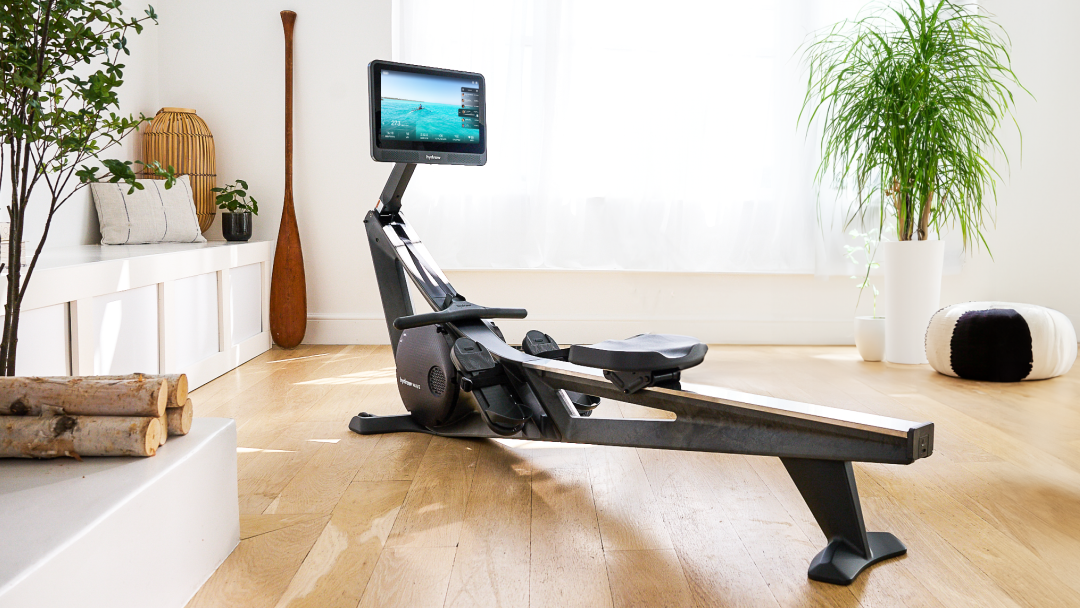Row Smarter, Not Harder: Why Hydrow's 104 Drag Factor Is the Key to Better Technique

If you've been rowing with Hydrow for a while, you might have noticed the mysterious "drag factor" setting. Perhaps you've played around with it, cranking it up when you wanted a more challenging workout or dialing it down when your muscles were sore. But what exactly is drag factor, and why does Hydrow recommend keeping it at 104?
Demystifying drag factor
Drag factor is a numerical value that measures how quickly the flywheel (or in Hydrow’s case, the electromagnetic braking mechanism) on your rowing machine slows down between strokes. Think of it as the virtual "heaviness" of your rowing experience.
Unlike outdoor rowing, where water conditions and boat types naturally create resistance, indoor rowers need to simulate this feeling. The drag factor setting allows your Hydrow to recreate different on-water experiences. A higher drag factor feels like rowing a heavier boat or moving through thicker liquid or higher currents, while a lower drag factor simulates a sleeker boat gliding through calm waters.
It's important to note that drag factor is not the same as intensity or difficulty. You can get an intense workout at the standard Hydrow drag factor setting of 104—the difference is in how it feels.
Why Hydrow recommends a drag factor setting of 104
Hydrow's recommendation of a 104 drag factor isn't arbitrary—it's based on extensive testing to replicate the optimal on-water rowing experience. Here's why this specific setting makes sense:
It mimics competitive rowing shells: Elite rowers typically use lightweight, sleek boats that cut through water efficiently. A drag factor of 104 simulates the feel of these high-performance shells.
It promotes proper technique: Lower drag factors encourage proper sequencing (legs-core-arms) and a strong leg drive. With a 104 setting, you can't muscle through the stroke using just your arms and back.
It's easier on your body: Higher drag factors place additional stress on your lower back and joints. The recommended setting allows for effective workouts while reducing injury risk.
It enables higher stroke rates: Competitive rowers typically maintain stroke rates between 24 and 36 strokes per minute. The 104 setting makes these higher, more cardio-intensive rates achievable.
It's what Hydrow Athletes use: When you're rowing along with your favorite Hydrow Athletes during indoor workouts, they're using this setting, meaning your experience will match what the Athlete is doing.
Why people change their drag factor (and why that could be a red flag)
Despite these benefits, many Hydrow users find themselves tempted to adjust their drag factor. This usually happens for a few specific reasons. Here’s what we hear:
"I need more resistance to get a good workout"
This is perhaps the most common misconception. If you feel like you're not getting enough resistance at 104, it's almost always a sign that you're missing something in your technique. Often, rowers who feel this way have inconsistencies in their sequencing on the drive.
"A higher drag factor feels more like a strength workout"
While higher drag factors do create more initial resistance, they often lead to shortened strokes and over-reliance on the arms and back. Ironically, you'll probably get a better full-body workout at the recommended setting with proper form.
"A lower drag factor feels too easy"
If a 104 drag factor feels too light, you might be rushing through the recovery phase or not focusing on the proper ratio or drive sequence. Remember, the drive should be powerful, while the recovery should be controlled and twice as long.
Fine-tune your technique instead of your settings
Rather than adjusting your drag factor when something doesn't feel right, consider these technique adjustments:
Focus on powerful leg drive (push, not pull!). Your legs should push back first, then swing and pull.
Maintain proper sequencing: legs-core-arms on the drive, arms-core-legs on the recovery.
Hinge your torso forward on the recovery, but without hunching your shoulders.
Keep your posture tall and core engaged throughout the stroke.
Pay attention to the ratio: explosive on the drive, controlled on the recovery.
If this seems confusing or you would like a little more direction, you can always book a session with Hydrow’s Personal Coach!
The bottom line
While it might be tempting to play with your Hydrow's drag factor settings, sticking with the recommended 104 will help you develop proper technique, protect your body from injury, and get the most authentic rowing experience possible.
Instead of seeing the fixed drag factor as a limitation, view it as an opportunity to refine your form. After all, Olympic-level rowers don't change water conditions to make rowing easier—they perfect their technique to move efficiently through whatever conditions they face.
See you on the water!

Real strength keeps moving
Learn how working out with Hydrow can help support a fuller, more active life.








